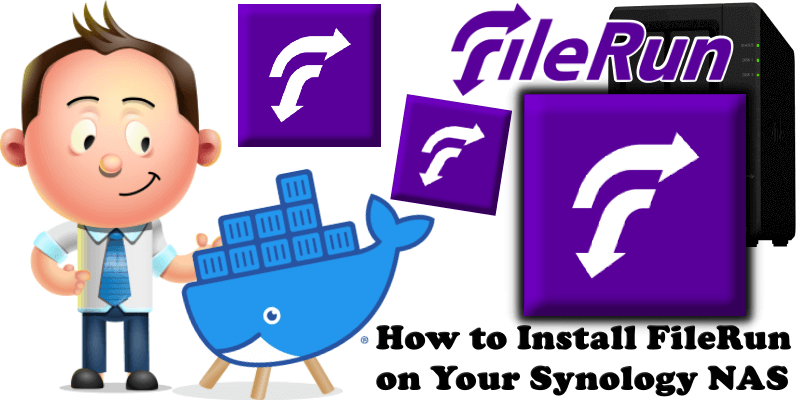
FileRun is a file manager that allows you to access your files from anywhere through a self-hosted secure cloud storage as well as provides file backup and sharing for your photos, videos, eBooks, files and more. FileRun is strictly file management application. In this step by step guide I will show you how to install FileRun on your Synology NAS using Docker & Portainer.
⚠️FileRun Deprecation Notice May 18, 2023: FileRun Free version is no longer available to new users. The guide below is also deprecated since the dev removed the old version from Docker. Check out the FileRun alternatives: Nextcloud, Pydio Cells, ownCloud and Seafile.
STEP 1
Please Support My work by Making a Donation.
STEP 2
Install Portainer using my step by step guide. If you already have Portainer installed on your Synology NAS, skip this STEP. Attention: Make sure you have installed the latest Portainer version.
STEP 3
Make sure you have a synology.me Wildcard Certificate. Follow my guide to get a Wildcard Certificate. If you already have a synology.me Wildcard certificate, skip this STEP.
STEP 4
Go to Control Panel / Login Portal / Advanced Tab / click Reverse Proxy. Follow the instructions in the image below.

STEP 5
Now click the “Create” button. Follow the instructions in the image below.
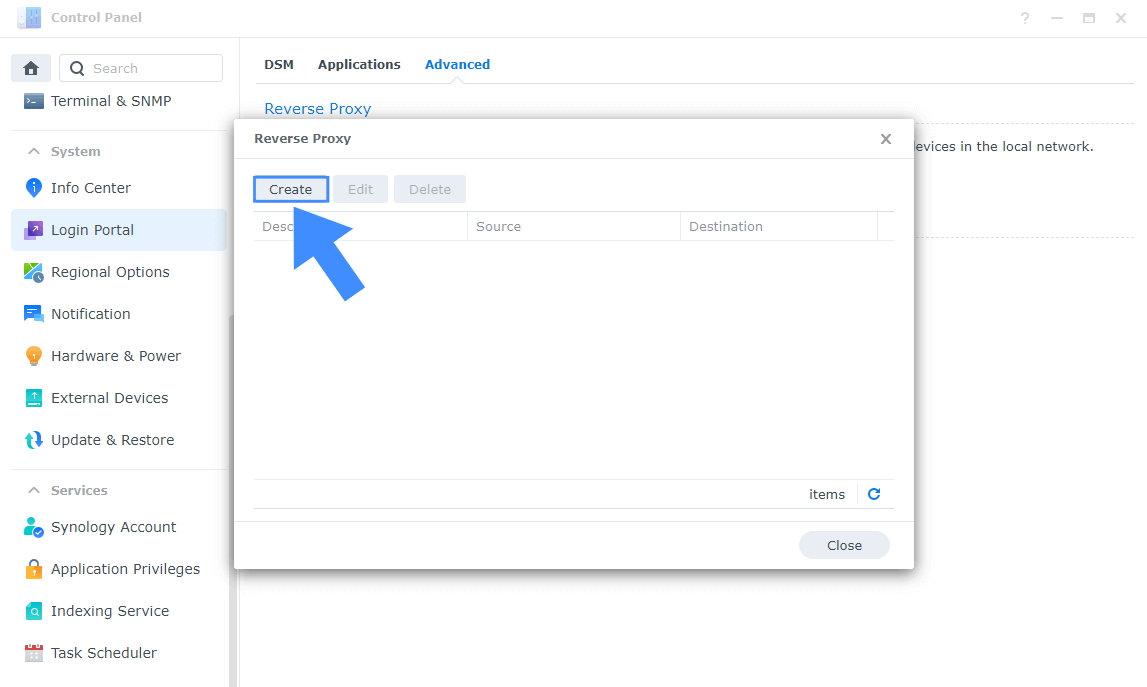
STEP 6
After you click the Create button, the window below will open. Follow the instructions in the image below.
On the General area, set the Reverse Proxy Name description: type in Filerun. After that, add the following instructions:
Source:
Protocol: HTTPS
Hostname: filerun.yourname.synology.me
Port: 443
Check Enable HSTS
Destination:
Protocol: HTTP
Hostname: localhost
Port: 8430
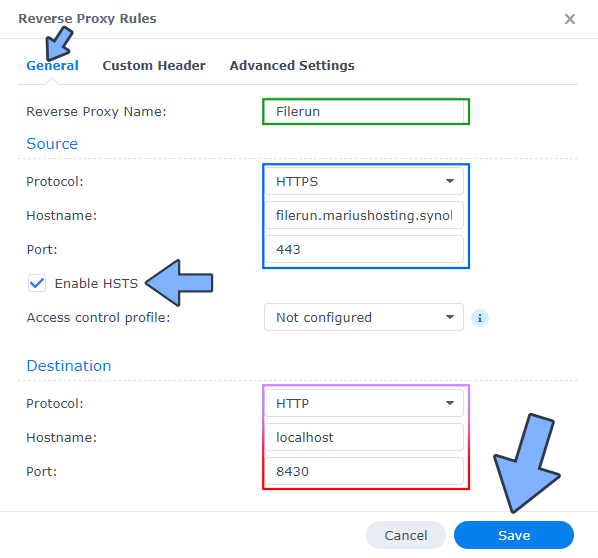
STEP 7
On the Reverse Proxy Rules, click the Custom Header tab. Click Create and then, from the drop-down menu, click WebSocket. After you click on WebSocket, two Header Names and two Values will be automatically added. Click Save. Follow the instructions in the image below.

STEP 8
Go to Control Panel / Network / Connectivity tab/ Check Enable HTTP/2 then click Apply. Follow the instructions in the image below.
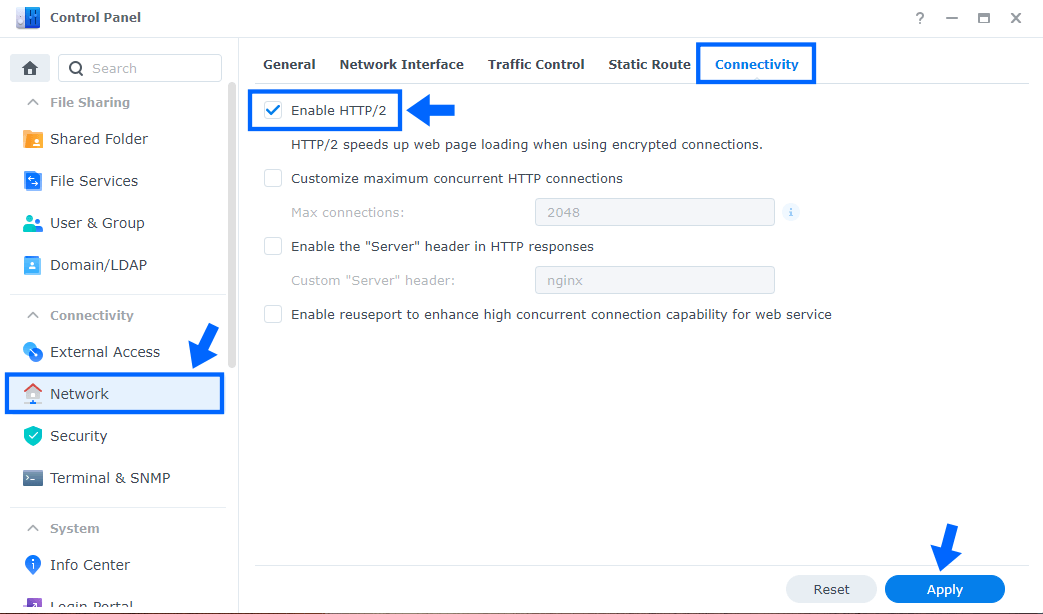
STEP 9
Go to Control Panel / Security / Advanced tab/ Check Enable HTTP Compression then click Apply. Follow the instructions in the image below.
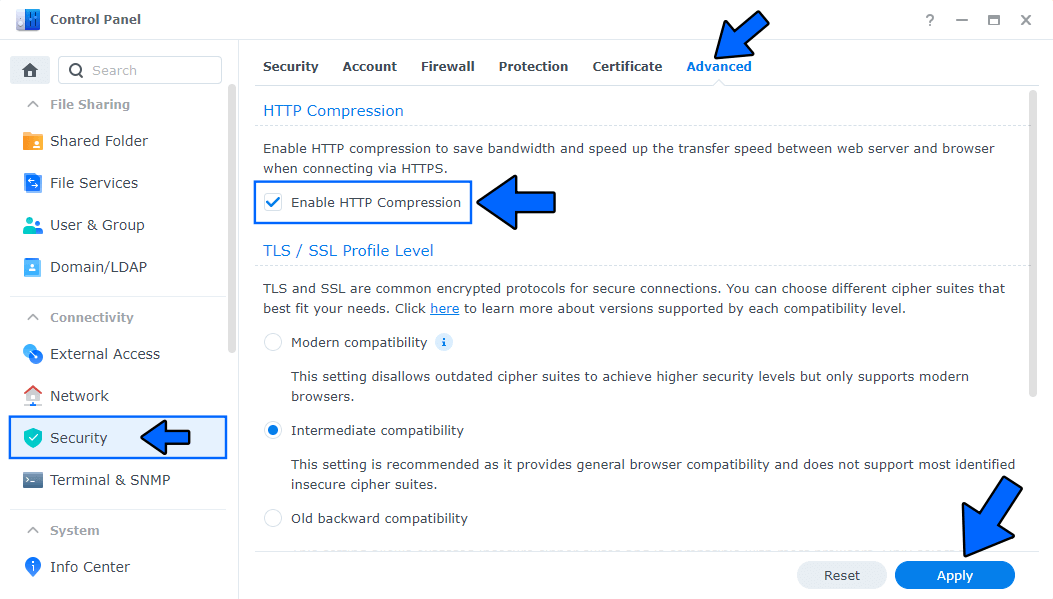
STEP 10
Go to File Station and open the docker folder. Inside the docker folder, create one new folder and name it filerun. Follow the instructions in the image below.
Note: Be careful to enter only lowercase, not uppercase letters.
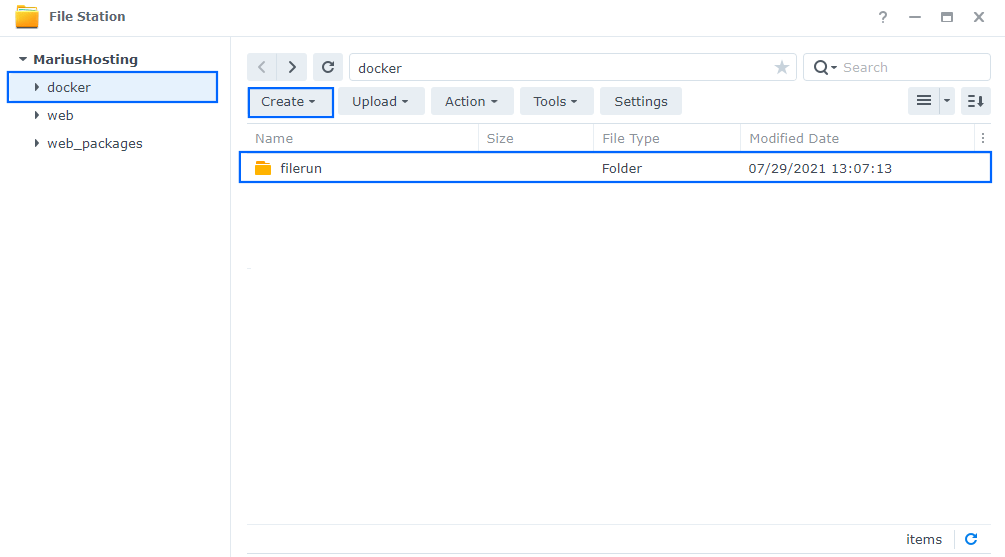
STEP 11
Now create three new folders inside the filerun folder that you have previously created at STEP 10. Name them data, db, files. Follow the instructions in the image below.
Note: Be careful to enter only lowercase, not uppercase letters.
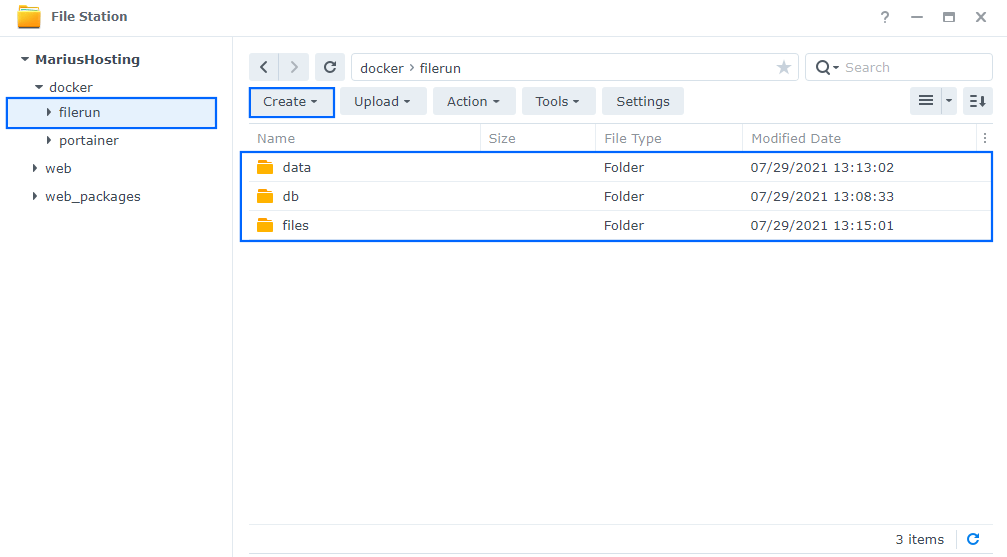
STEP 12
Log into Portainer using your username and password. On the left sidebar in Portainer, click on Home then Live connect. Follow the instructions in the image below.

On the left sidebar in Portainer, click on Stacks then + Add stack. Follow the instructions in the image below.

STEP 13
In the Name field type in filerun. Follow the instructions in the image below.
version: '3.9'
services:
db:
image: mariadb:11.3
container_name: FileRun-DB
restart: always
environment:
MYSQL_ROOT_PASSWORD: filerun
MYSQL_USER: filerun
MYSQL_PASSWORD: filerun
MYSQL_DATABASE: filerun
volumes:
- /volume1/docker/filerun/db:/var/lib/mysql
web:
image: filerun/filerun
container_name: FileRun
restart: always
environment:
FR_DB_HOST: db
FR_DB_PORT: 3306
FR_DB_NAME: filerun
FR_DB_USER: filerun
FR_DB_PASS: filerun
depends_on:
- db
ports:
- 8430:80
volumes:
- /volume1/docker/filerun/data:/var/www/html
- /volume1/docker/filerun/files:/user-files
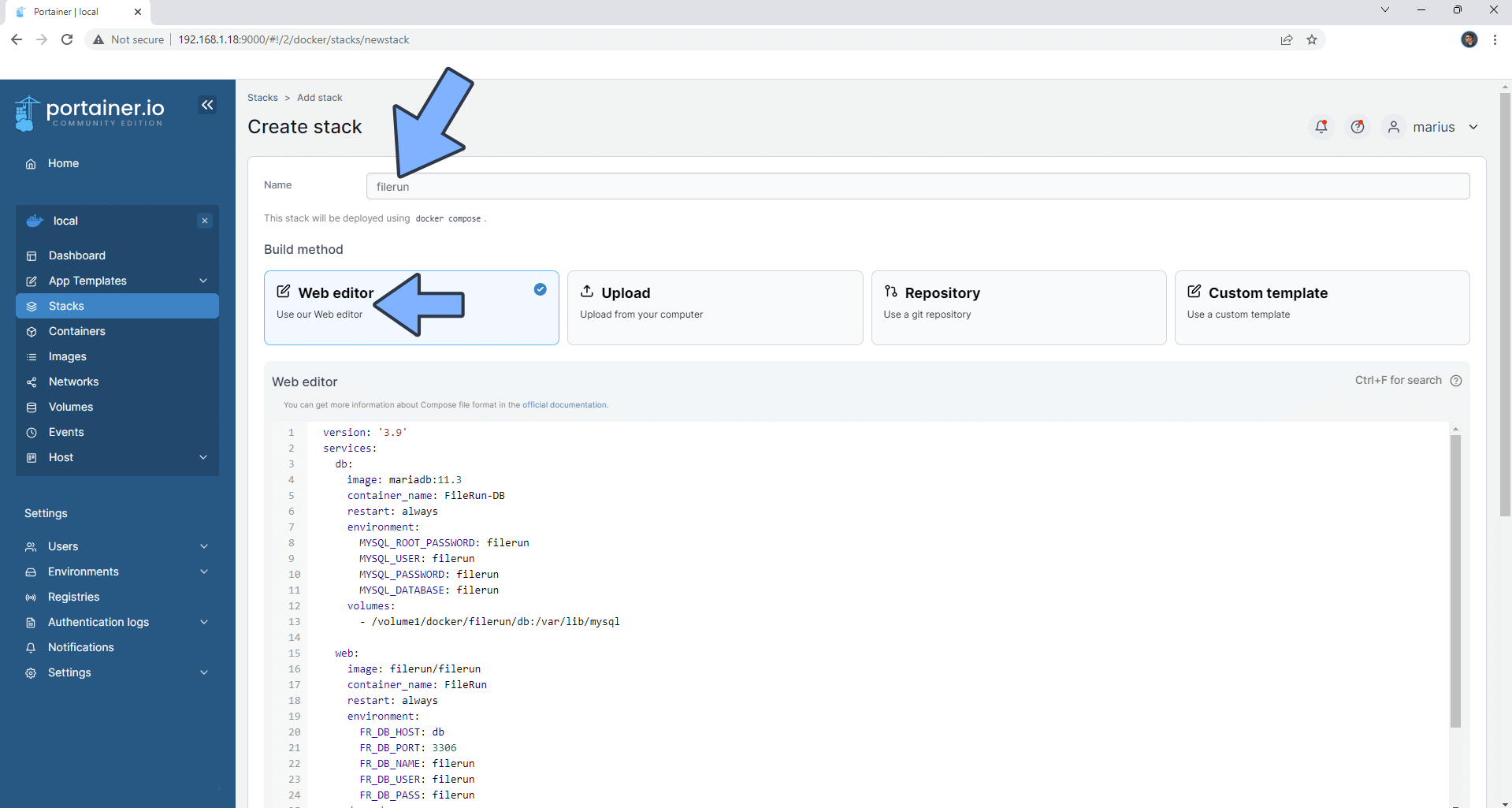
STEP 14
Scroll down on the page until you see a button named Deploy the stack. Click on it. Follow the instructions in the image below. The installation process can take up to a few minutes. It will depend on your Internet speed connection.
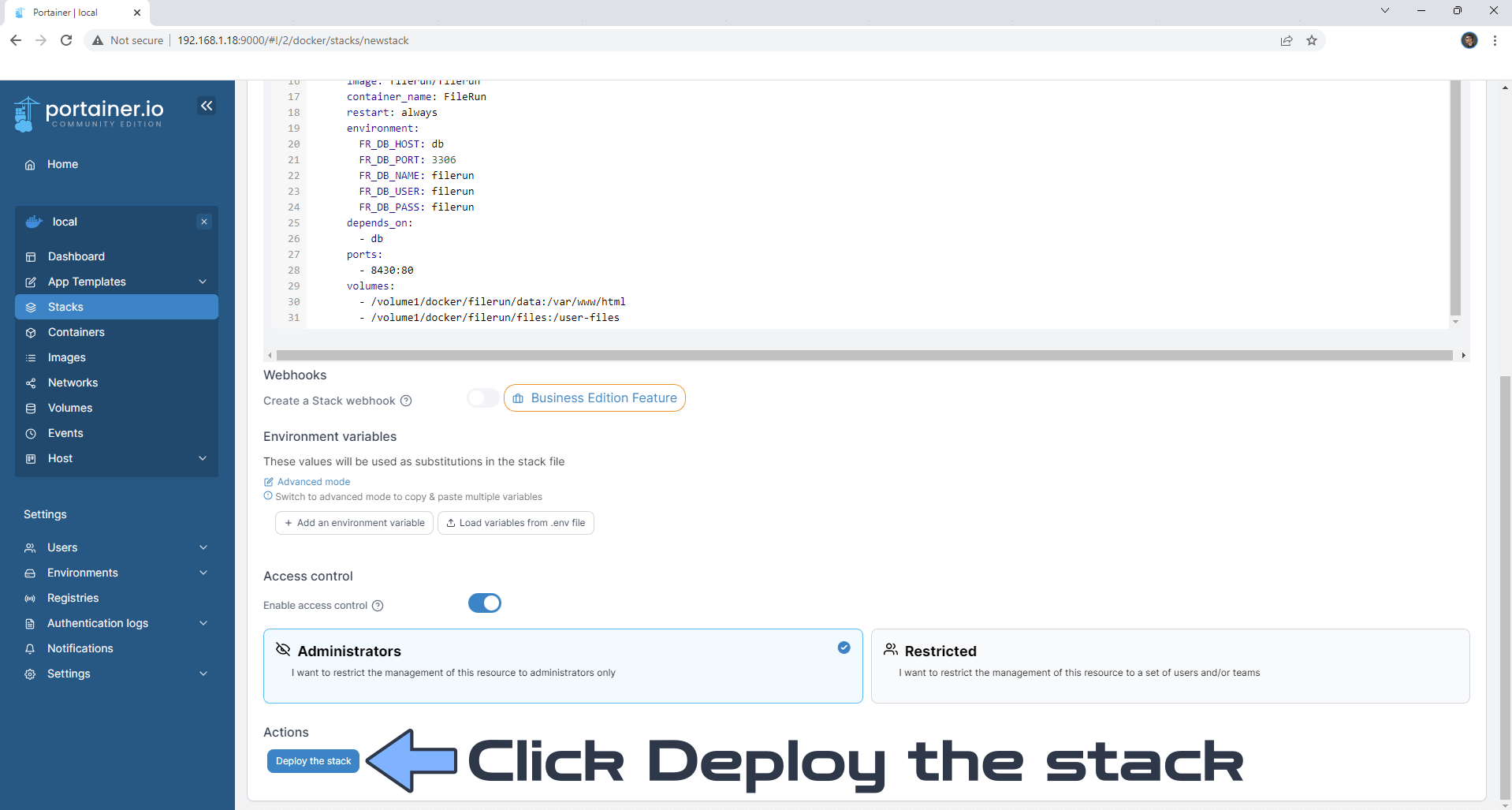
STEP 15
If everything goes right, you will see this message at the top right of your screen: “Success Stack successfully deployed“.

STEP 16
🟢Please Support My work by Making a Donation. Almost 99,9% of the people that install something using my guides forget to support my work, or just ignore STEP 1. I’ve been very honest about this aspect of my work since the beginning: I don’t run any ADS, I don’t require subscriptions, paid or otherwise, I don’t collect IPs, emails, and I don’t have any referral links from Amazon or other merchants. I also don’t have any POP-UPs or COOKIES. I have repeatedly been told over the years how much I have contributed to the community. It’s something I love doing and have been honest about my passion since the beginning. But I also Need The Community to Support me Back to be able to continue doing this work.
STEP 17
Now open your browser and type in your HTTPS/SSL certificate like this https://filerun.yourname.synology.me In my case it’s https://filerun.mariushosting.synology.me If everything goes right, you will see the FileRun installation page. Click Next. Follow the instructions in the image below.
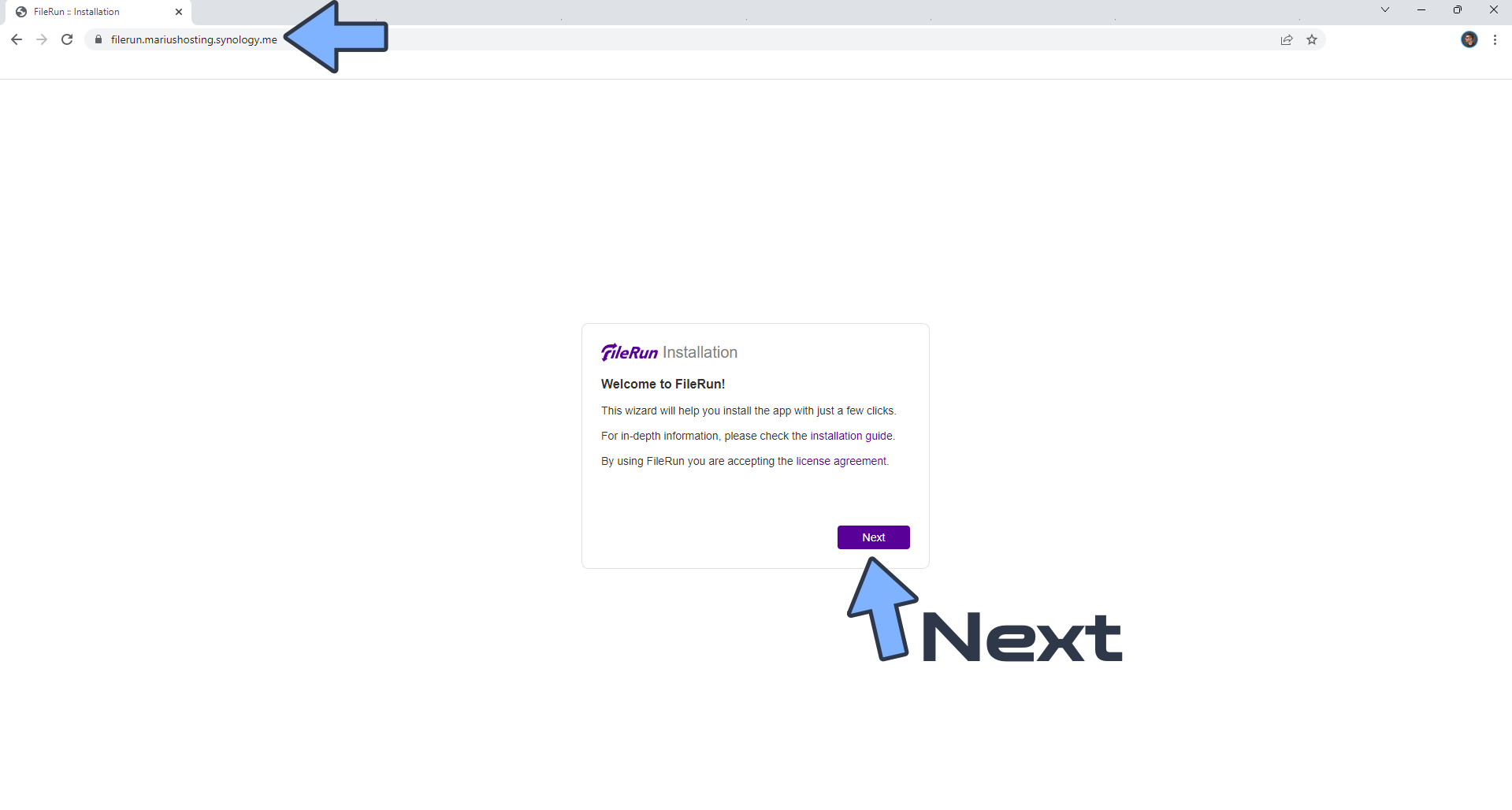
STEP 18
After the Server requirements check is done, click Next. Follow the instructions in the image below.
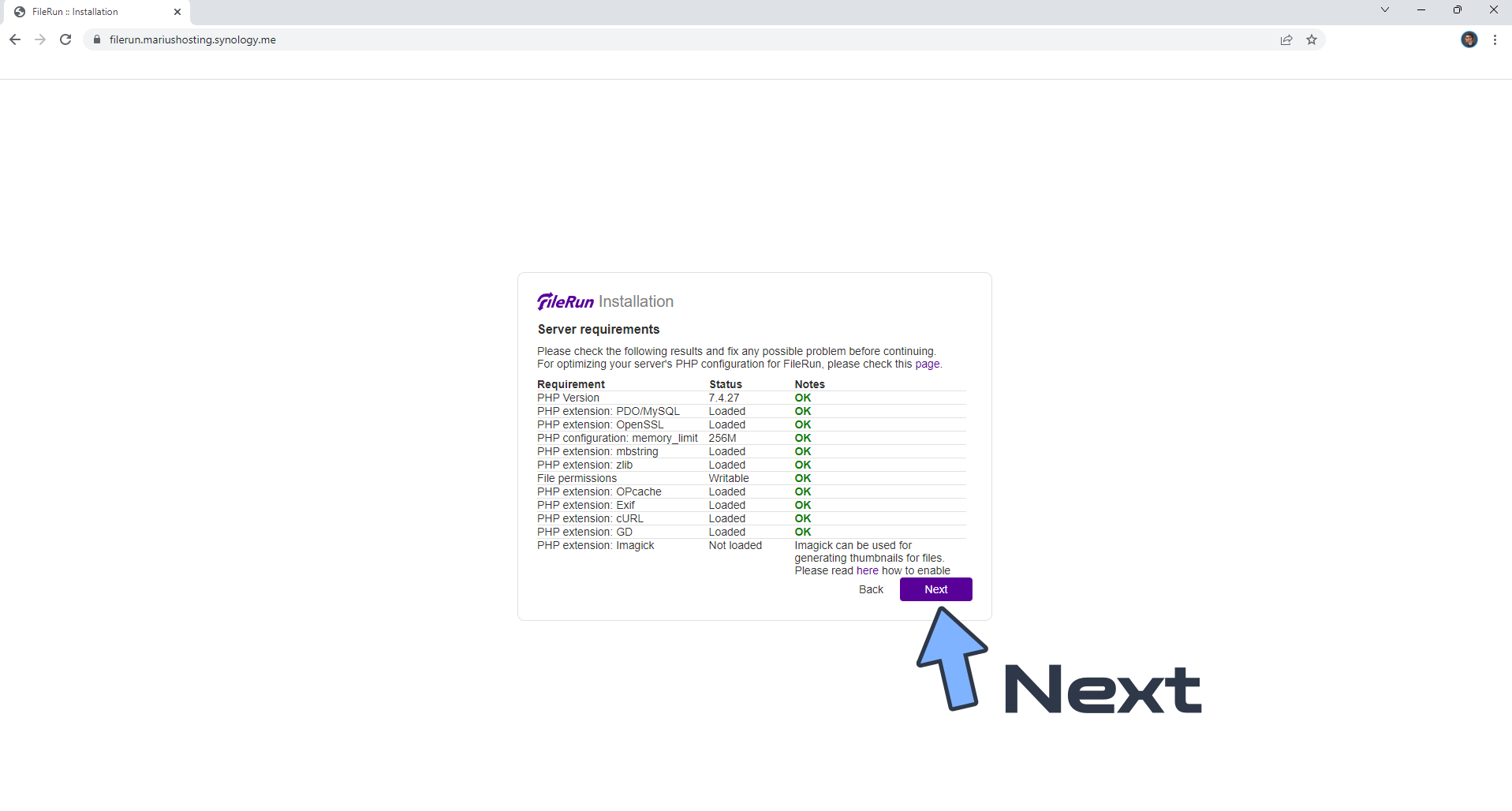
STEP 19
Don’t change anything in the Database setup. Click Next. Follow the instructions in the image below.

STEP 20
Your default username will be superuser. Copy the generated password because you will need it on the next STEP. Click Next. Follow the instructions in the image below.
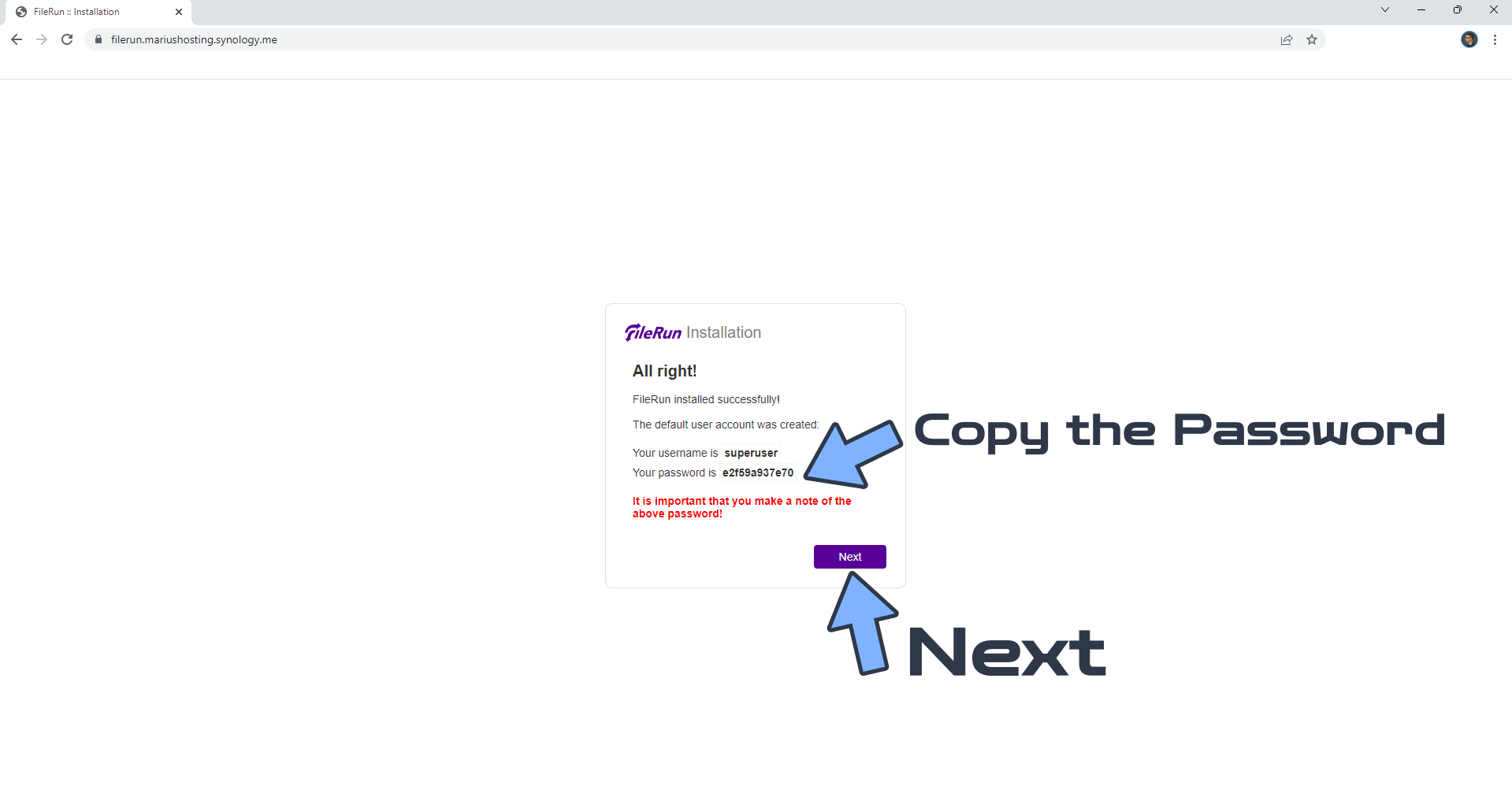
STEP 21
Type in superuser as username and type in the password you have previously copied at STEP 20. Click Sign in. Follow the instructions in the image below.
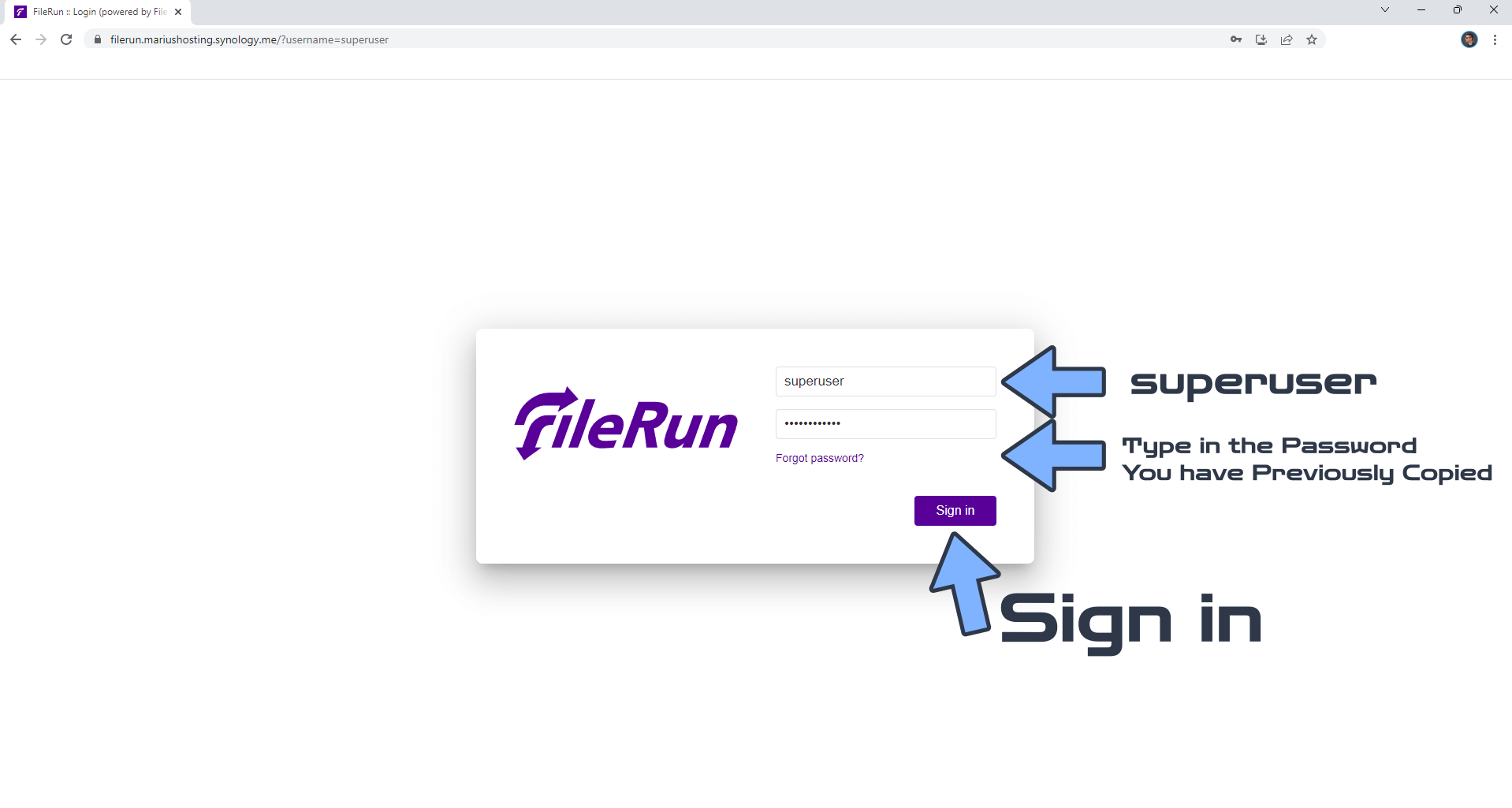
STEP 22
On the left sidebar, click Superuser. Change the Password, add an email, add a profile image, then click Save changes. Follow the instructions in the image below.
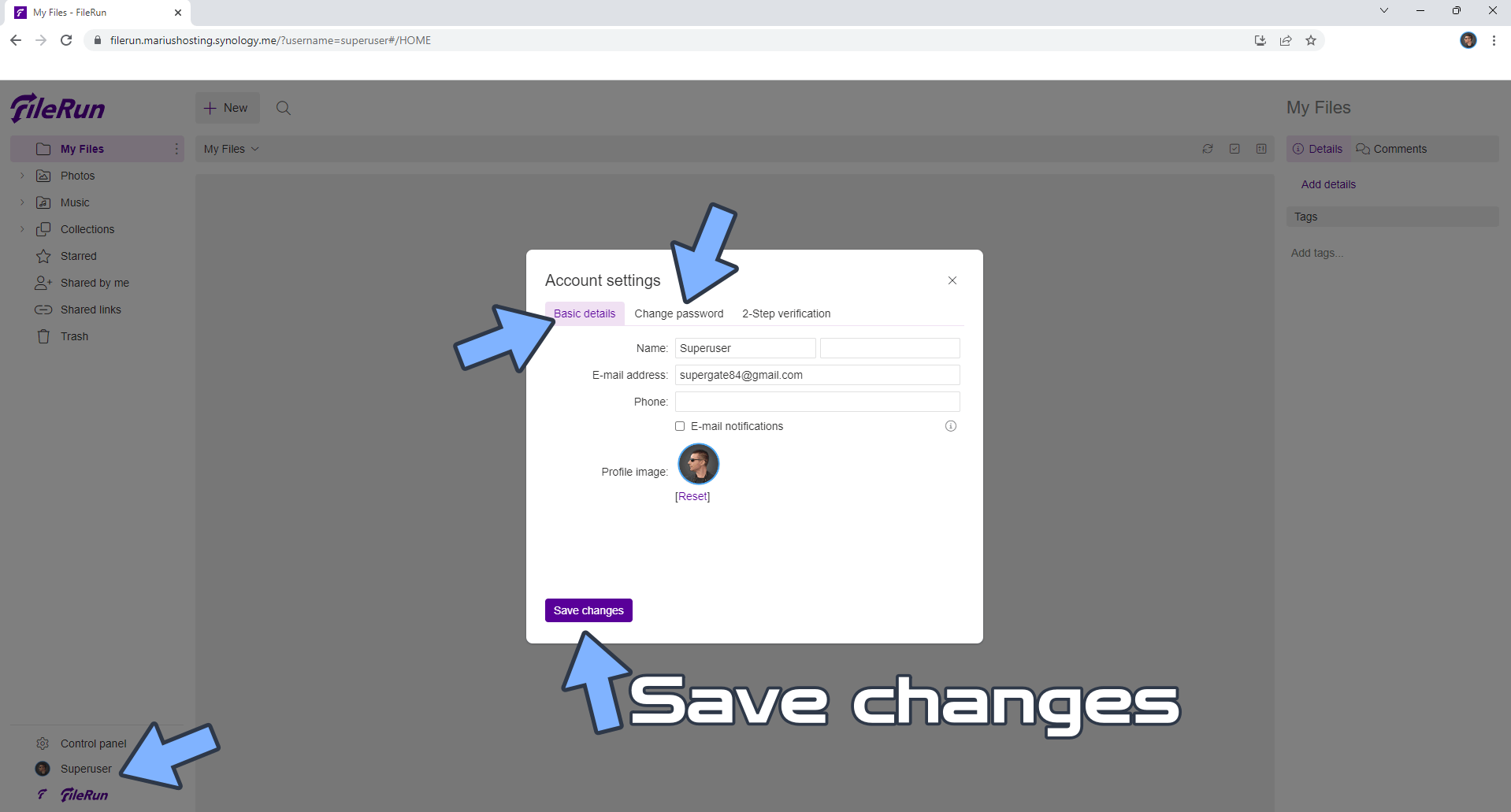
STEP 23
Drag and Drop your files from your NAS or PC into FileRun. Follow the instructions in the image below.
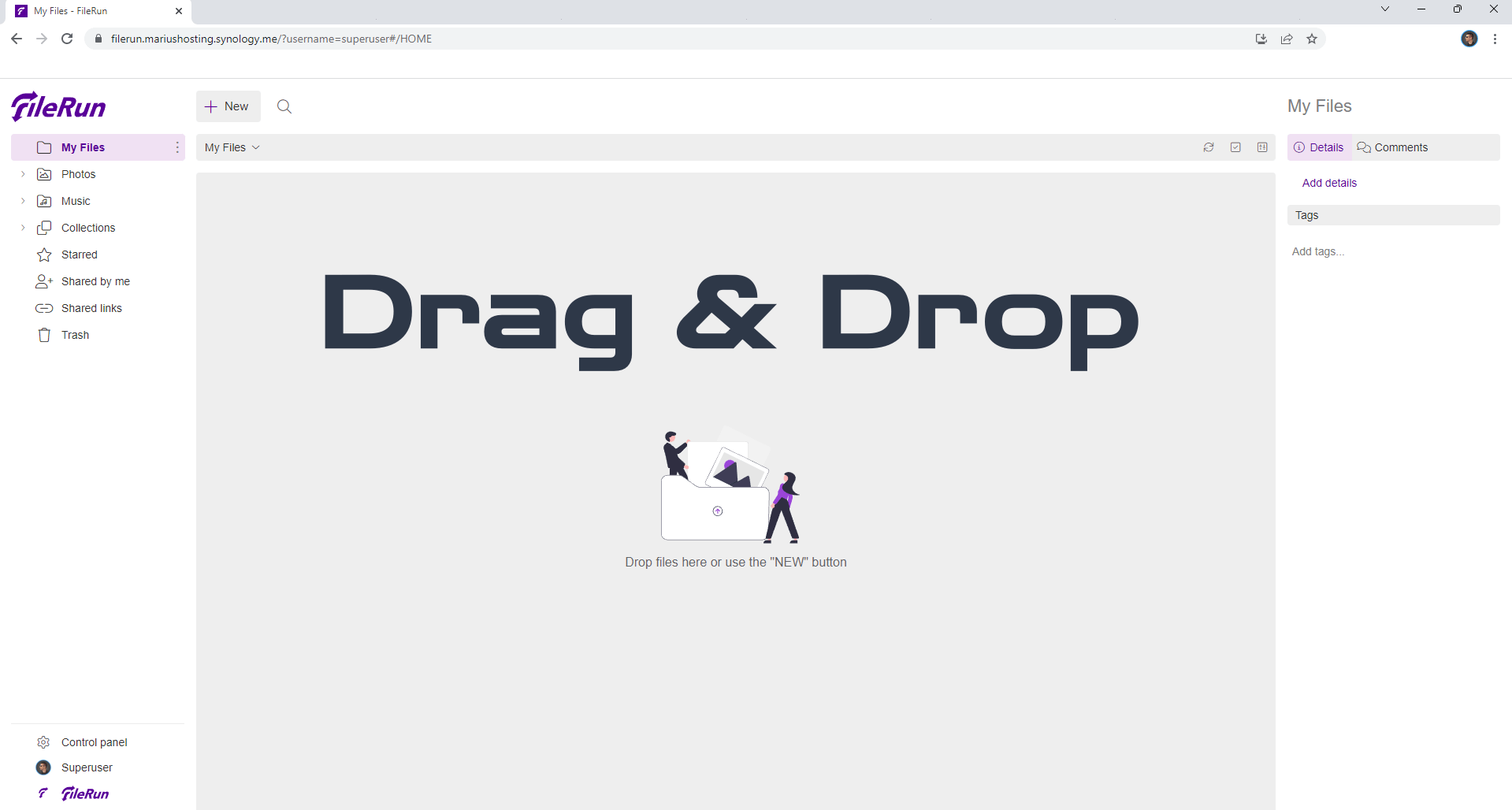
STEP 24
You can add details, comments or tags to every file.

STEP 25
You can upload and read your own eBook files in the ePUB format without worries about metadata.

Reading from your PC, Tablet or Mobile Phone is blazing fast!
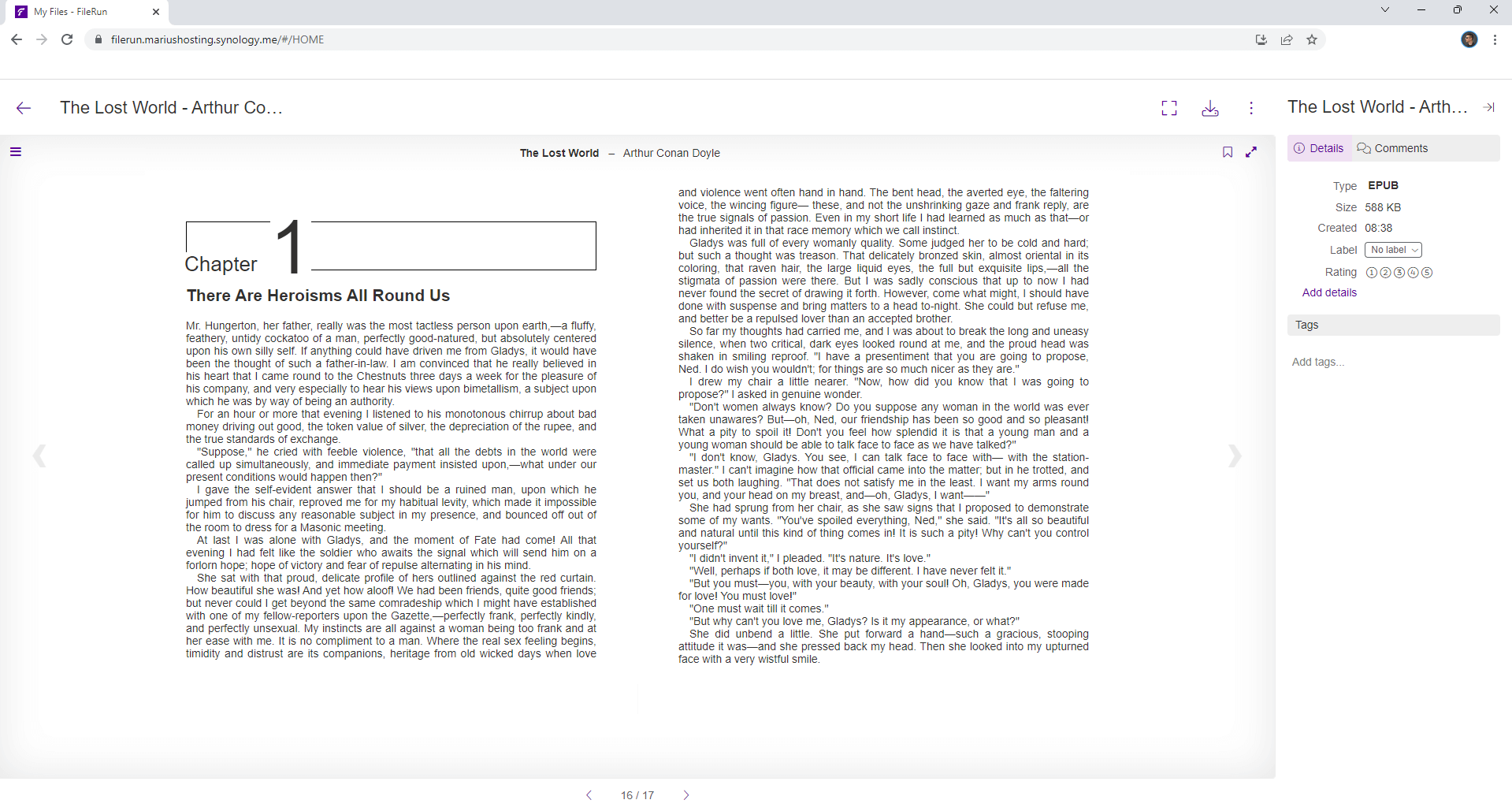
Note: Can I run Docker on my Synology NAS? See the supported models.
Note: How to Back Up Docker Containers on your Synology NAS.
Note: Find out how to update the FileRun container with the latest image.
Note: How to Free Disk Space on Your NAS if You Run Docker.
Note: How to Schedule Start & Stop For Docker Containers.
Note: How to Activate Email Notifications.
Note: How to Add Access Control Profile on Your NAS.
Note: How to Change Docker Containers Restart Policy.
Note: How to Use Docker Containers With VPN.
Note: Convert Docker Run Into Docker Compose.
Note: How to Clean Docker.
Note: How to Clean Docker Automatically.
Note: Best Practices When Using Docker and DDNS.
Note: Some Docker Containers Need WebSocket.
Note: Find out the Best NAS Models For Docker.
Note: Activate Gmail SMTP For Docker Containers.
This post was updated on Saturday / August 30th, 2025 at 12:12 AM
